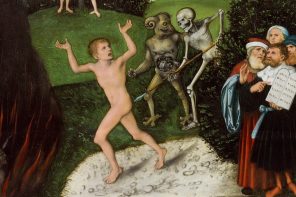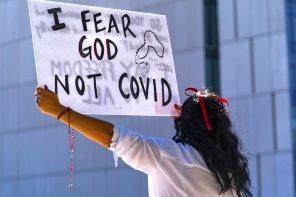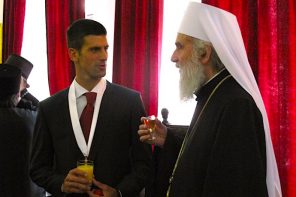When news first broke of COVID-19’s presence in New York City, it centered on the city of New Rochelle and its Orthodox Jewish community as the source of the contagion. New York health officials announced that the state of New York would issue a containment zone one mile in every direction around an Orthodox Jewish synagogue in New Rochelle, called Young Israel of New Rochelle. A week after announcing this initial containment zone, the synagogue was closed down under a state mandate and those who attended the synagogue were put under a self-quarantine order. The private, Jewish schools which surrounded the synagogue were also shut down with Orthodox Jewish communities obeying the recommended advice of New York health officials regarding self-quarantine and social distancing.
In the days that followed, many members of the synagogue questioned why a blanket quarantine of the entire city of New Rochelle wasn’t ordered, while the state of New York simply imposed a containment zone around their Jewish community. As one congregant explained, “No one who has been asymptomatic has been requested to self-quarantine except for Young Israel of New York.”
Even leading journalists questioned the health officials’ decision. USA Today journalist Joseph Spector observed that “the same mandates have not been applied to other neighboring communities where some cases have been found.” In stark contrast to New Rochelle, a week earlier when a New York City woman who lived in Manhattan tested positive for COVID-19 after returning from Iran, health officials assured residents of New York City that the risks were very low and there was no need for quarantine measures. As New York Health Commissioner Oxiris Barbot said in a public press conference,“While we hoped this moment wouldn’t come, it was something we prepared for. As we confront this emerging outbreak, we need to separate facts from fear, and guard against stigma and panic.”
Amidst COVID-19 spreading across the state, New Rochelle was arbitrarily selected as the primary site of contagion in the state of New York. Moreover, in the days that followed the arbitrary geographic containment zone didn’t limit or contain the COVID-19 outbreak to New Rochelle, but within a matter of days, New York City became the epicenter of COVID-19 cases in the state of New York.
The inconsistency in public health’s social distancing measures and treatment of Orthodox Jewish communities in the state of New York raises important questions about how discourses of contagion might be influencing and shaping public health policy during this historic outbreak.
Fears of Jewish contagion have a very long and complicated history with public health and have, at times, played a dominant role in shaping American history and politics. Louis Harap, in The Image of the Jew in American Literature traces the installation of social distancing measures against Jewish contagion to the colonial period.
During the 20th century, older discourses of contagion were revised around growing hysteria over unclean Jews in urban industrial factories, especially in New York City. In particular, Bender argues that the dominance of Jewish sweatshop workers in the garment industry led many Americans to worry about “the possibility of contagion spreading through infected clothing.” These fears even led a U.S. House committee, formed to investigate Jewish sweatshops, to declare that:
“Contagious diseases which are specially prevalent among these people, thrive along with their work, and even death may distract from their occupation, only the one of the few necessary to dispose of the body.”
Regulations were consequently imposed on Jewish communities’ movements and mobility, including housing regulations, as the American public demanded protections against Jewish communities’ contagious and infectious diseases. The advocacy of all such measures led the burgeoning field of public health to naturalize and legitimate anti-Semitic beliefs and depictions of Jews.
Perhaps Jewish communities’ fear of a fascist takeover of U.S politics during the interwar period, as best described in novelist Philip Roth’s Plot Against America, were informed by trauma from the Nazi Regime’s infamous public health department established on the premise of protecting Germans from Jewish communities’ infectious diseases. The order to relocate Jewish communities to ghettos was in fact a public health order which was justified on the assumption that such social distancing measures were necessary to protect the health and safety of the community. As Berel Lang explains, “the extirpation of the Jews would represent a cure; genocide in effect be a requirement of public health.”
Although the horrors of the past often seem like a distant memory, the COVID-19 pandemic raises fundamental questions about how these discourses of contagion continue to haunt contemporary public health policy revealing how it could potentially lead to more damaging consequences than COVID-19 itself.
As the pandemic continues to grow and expand across the globe, politicians will continue to use public health’s mathematical modeling and advised measures to delineate and justify their political strategies. The social distancing and containment measures imposed by Federal and State Governments per recommendation of the Center for Disease Control and World Health Organization will have far-reaching impact on historically underrepresented and marginalized communities. Some of this impact has the potential to be more far-reaching and damaging than the virus itself.
The case of New Rochelle is perhaps an early warning of the ways in which anxieties about contagion contribute to xenophobia. Far from a relic of the past, the state of New York’s inconsistent and senseless decision to impose a containment zone around New Rochelle’s Orthodox Jewish community is a cautionary tale about the ways in which the science of contagion racializes communities as non-white, including contemporary Asian Americans.
The FBI recently issued a report warning U.S. politicians that Asian Americans are increasingly being attacked in the streets and blamed for the COVID-19 pandemic a problem caused, or at least exacerbated, by the current administration and its base. As the global economy suffers from a historically unprecedented recession, these attacks might become even more prevalent and violent as people increasingly try to find scapegoats to blame for the pandemic’s damage to the global economy.
Rather than focus exclusively on the racialization of Asian Americans during the COVID-19 pandemic, we must situate it within larger histories of racialization that entangles public health and question who counts as the ‘public’ and who may suffer due to the measures taken to safeguard its health.





